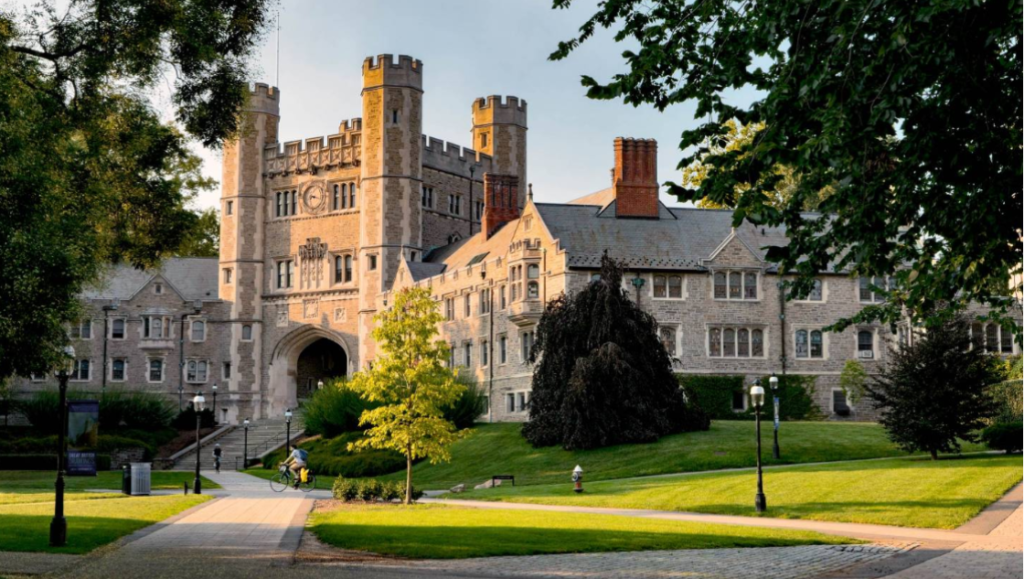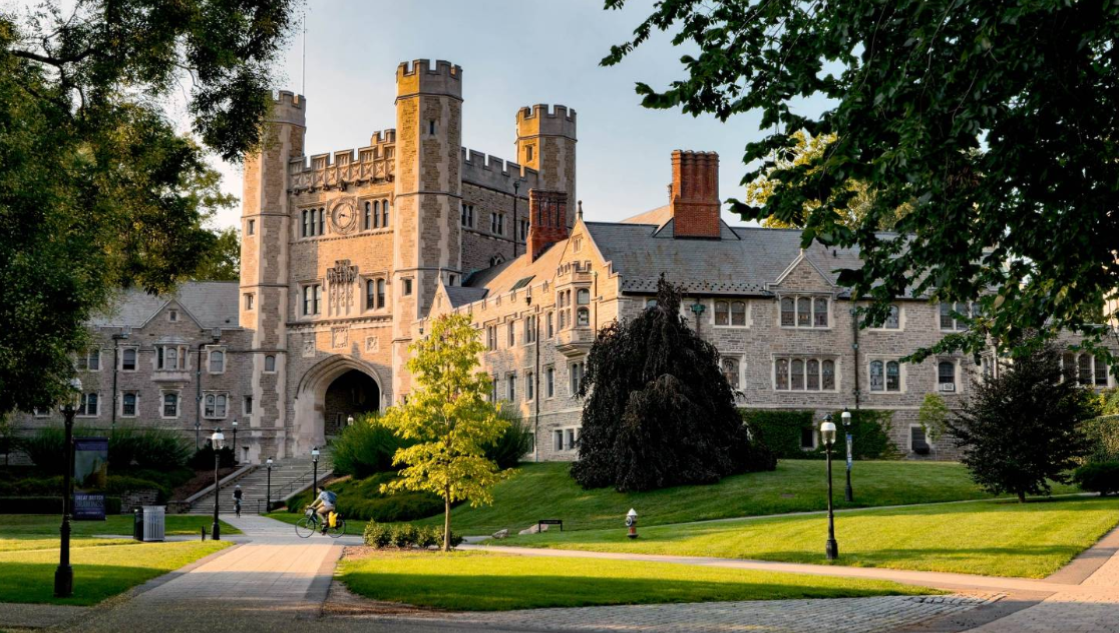When students first start thinking about how many colleges are in the US, most don’t know how many options are out there. Many only know about the state institutions, community colleges in their area, and the elite universities whose names are frequently featured in TV series, films, and literature. In reality, the U.S. is home to thousands of institutions.
The vast and varied higher education system in the United States is well-known around the world. The US higher education scene is broad and diverse, ranging from little liberal arts colleges to prominent Ivy League schools. However, the number of universities in the US within its vast borders is a mystery. In this piece, we examine the details and go beyond the numbers in the American collegiate landscape.
Read Also:12 Best Community Colleges in Canada
How Many Colleges Are In The US?

As of the latest available data, which may vary slightly due to new openings or closures, there are over 4,000 degree-granting institutions in the United States. This includes public and private institutions, as well as for-profit colleges and universities. However, the exact count can fluctuate due to various factors, such as mergers, closures, and the establishment of new institutions.
According to the National Center for Education Statistics (NCES), there were approximately 3,982 degree-granting institutions in the US as of the 2019-2020 academic year. This number of how many colleges are in the US encompasses a wide spectrum of institutions, ranging from large public research universities to small private colleges.
The Impact of Size and Location:
How Many Colleges Are In The US The size and location of colleges in the US vary greatly. Some institutions boast tens of thousands of students and expansive campuses, while others have only a few hundred students and more intimate learning environments. Furthermore, colleges are distributed throughout the country, from bustling urban centers to rural towns and everything in between.
The geographic distribution of colleges also influences how many colleges are in the US accessibility and educational opportunities for students. Urban areas tend to have a higher concentration of colleges and universities, offering a wide array of academic programs and resources. However, rural areas may have fewer institutions, leading some students to travel long distances or rely on online education options.
Read Also: UFV Blackboard Login| University Of The Fraser Valley
Understanding Diversity:
The term How Many Colleges Are In The US can refer to a wide range of institutions offering undergraduate and sometimes graduate degrees. These include community colleges, four-year colleges, universities, vocational schools, and more. Each type of institution serves distinct purposes and caters to different segments of the population.
Community colleges, for example, often provide two-year associate degrees and certificate programs, as well as serve as pathways to further education for many students. Meanwhile, four-year colleges and universities typically offer bachelor’s degrees and often extend to graduate programs, including master’s and doctoral degrees. Additionally, specialized institutions are focusing on specific fields such as art, music, engineering, and more.
Types of Colleges in the US
American colleges come in a variety of forms: public, private, nonprofit, for-profit, two-year, and four-year institutions. You can use your federal financial aid to help pay for tuition and fees at these degree-granting institutions since they adhere to Title IV requirements.
Because every school is distinct in how it gets and uses financing based on its mission and goals, every type of school serves a different demographic and has a varied budget. Therefore, each provides programs that are tailored to its goals and the needs of its students.
Read Also: Best List of Philippine Normal University Courses 2024
In the United States, there are several types of colleges and universities offering different educational programs and degrees. Here are some of the main types:
- Public Colleges and Universities:
- Public colleges are supported by state and municipal governments. Generally speaking, they have less tuition, particularly for in-state students. There are many different programs and degrees offered by these universities.
- Private colleges, on the other hand, rely on tuition, fees, and non-government funding sources. Generous financial aid packages are often available due to private donations.
- For-Profit Colleges:
- For-profit institutions operate as businesses and usually focus on career training. While they offer various degree programs, it’s essential to exercise caution. These programs often come at a higher cost, leading to more student debt. Additionally, credits earned may not always transfer to other colleges.
- Four-Year and Two-Year Colleges:
- Four-year institutions include both universities and liberal arts colleges. They specifically offer bachelor’s degree programs.
- Two-year colleges provide certificate courses that can be finished in less than two years. They also offer associate degrees that last two years. Examples include community colleges, vocational-technical colleges, and career colleges.
- Liberal Arts Colleges:
- These educational establishments prioritize providing a wide-ranging education in liberal arts subjects like biology, mathematics, languages, literature, and history. The majority of liberal arts universities are private, and four-year bachelor’s degree programs are offered. They get pupils ready for graduate school and a variety of careers.
- Universities:
- Universities are bigger establishments with more alternatives for academic majors and degrees. They provide doctorate, master’s, and bachelor’s degree programs.
- A majority of universities are made up of multiple smaller colleges, such as education, engineering, or health sciences colleges. These universities equip their students for higher coursework or a variety of job opportunities.
- Community Colleges:
- Community colleges offer two-year associate degrees, preparing undergraduates for transfer to four-year institutions. They also provide certificates and associate degrees tailored to particular careers.
- These colleges are an affordable option due to their low tuition costs.
Understanding these different types of colleges is crucial for making informed decisions about your education. If you’re interested in a specific field, a well-rounded liberal arts education, or career-focused training, there’s a college or university out there to meet your needs!
Read Also: How to Start a Recovery House with the Right Steps
Factors to Consider
Factors to consider include academic programs offered, location, campus culture, size, cost and financial aid, extracurricular activities, campus resources, faculty-to-student ratio, and post-graduation opportunities such as internships, job placement, and graduate school acceptance rates.
Application process:
The application process typically involves submitting an application form, standardized test scores (such as the SAT or ACT), high school transcripts, letters of recommendation, personal essays or statements, and possibly an interview.
Deadlines vary but often include early decision, early action, and regular decision options. For-Profit Colleges: These institutions operate as businesses, aiming to make a profit from providing education and training. They offer a variety of programs, often focusing on vocational and career-oriented training.
Each type of college offers unique opportunities and experiences for students, and individuals may choose a college based on factors such as academic interests, career goals, location, size, cost, and campus culture.
Read Also: 7 Signs A Career in Human Resources Might Be Perfect For You
Factors Driving College Closures

Why do colleges close their doors? Several factors come into play:
- Financial Struggles: Many colleges grapple with financial instability due to declining enrollment, rising costs, and inadequate endowments.
- Enrollment Declines: Changing demographics and competition impact student enrollment.
- Regulations for For-Profit Institutions: Stricter regulations have affected for-profit colleges.
- Federal Government Policies: Federal policies influence funding and accreditation.
- Small Liberal Arts Colleges: These face unique challenges, including maintaining relevance in a rapidly evolving educational landscape.
Read Also: MacEwan University Student Portal 2024
FAQs about How Many Colleges are in the US
Here are some faqs about colleges in the US
1. How do I pick the best college for my needs?
Factors to consider include academic programs offered, location, campus culture, size, cost and financial aid, extracurricular activities, campus resources, faculty-to-student ratio, and post-graduation opportunities such as internships, job placement, and graduate school acceptance rates.
2. What is the application process for colleges in the U.S.?
The application process typically involves submitting an application form, standardized test scores (such as the SAT or ACT), high school transcripts, letters of recommendation, personal essays or statements, and possibly an interview. Deadlines vary but often include early decision, early action, and regular decision options.
3. How can I afford college in the US?
Options for financial aid include work-study programs, grants (which do not require repayment), loans (which do require repayment with interest), and scholarships. Students can apply for federal student financial aid (FAFSA), which establishes their eligibility for loans, grants, and work-study funding from the federal government as well as aid from certain states and universities.
4. What is the difference between tuition and the total cost of attendance?
Yes, many colleges and universities in the United States welcome applications from international students. However, international students may have additional requirements, such as English language proficiency tests (like the TOEFL or IELTS), visa applications, and documentation of financial support.
5. What is the significance of college rankings?
College rankings can provide useful information about the reputation, quality, and resources of institutions, but they should not be the sole factor in choosing a college. It’s essential to consider individual fit and personal goals rather than relying solely on rankings.
6. What support services are available for students in college?
Colleges typically offer a range of support services, including academic advising, tutoring, counseling and mental health services, career services, disability support, health services, and various student organizations and clubs.
7. What is campus life like at colleges in the U.S.?
